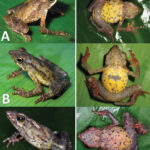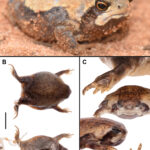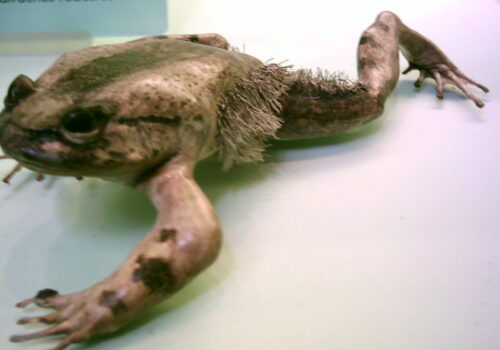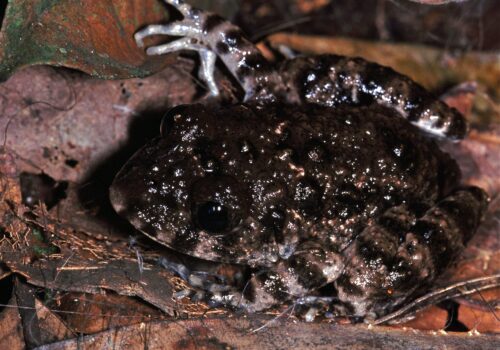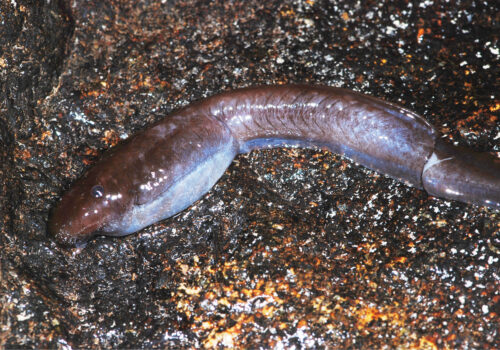- Meet Arthroleptis crusculum: The Secretive Whisper of East Africa's Forest Floors
- Taxonomy and Classification
- Natural Habitat: Life Amid the Leaf Litter
- Physical Characteristics: Subtle Beauty, Perfect Adaptation
- Behavior and Life Cycle: Secrets of the Forest Floor
- Ecological Role: Tiny but Significant Contributors
- Threats and Conservation Status
- Cultural and Scientific Significance
- Conclusion: Protecting the Quiet Wonders of Our World
Meet Arthroleptis crusculum: The Secretive Whisper of East Africa’s Forest Floors#
In the lush, emerald embrace of East Africa’s forests, among the rust-colored leaf litter, a hidden chorus arises at dusk—soft, rhythmic whispers barely audible to human ears. They belong to Arthroleptis crusculum, a fascinating yet surprisingly poorly-known little terrestrial frog whose secretive habits and subtle presence have long intrigued scientists and nature enthusiasts alike. Known commonly as the “Little Squeaker” or simply identified by its scientific nomenclature, Arthroleptis crusculum remains one of nature’s quiet miracles.
Occasionally mistaken for other small forest frogs, the subtle charm of Arthroleptis crusculum lies not in colorful flamboyance but in quiet adaptation and intrigue. Within the folds of biodiversity-rich ecosystems, this species plays vital yet invisible roles, marking its importance far beyond its diminutive stature.
Taxonomy and Classification#
Arthroleptis crusculum belongs to the family Arthroleptidae, a fascinating group composed largely of terrestrial frogs varying in size and behavior. Within this family, the genus Arthroleptis stands well-known for a fascinating reproductive strategy: direct development, meaning they bypass the aquatic tadpole stage entirely—a peculiarity that greatly influences conservation strategies and ecological adaptability.
First described scientifically by Angel in 1950, Arthroleptis crusculum distinguishes itself as one of the lesser-known species within its genus. Taxonomic clarifications and genetic studies are ongoing, highlighting an engaging lesson about the subtle complexities of amphibian diversity. Its closest relatives, species such as Arthroleptis stenodactylus and Arthroleptis xenodactyloides, often inhabit similar ecosystems, sometimes making distinctions a challenging but exciting scientific pursuit.
Natural Habitat: Life Amid the Leaf Litter#
The range of Arthroleptis crusculum primarily encompasses humid montane and submontane forests, with confirmed populations occurring notably within Tanzania and possibly extending into adjacent biogeographic regions. Though elusive and seldom seen, the frog reveals itself most readily in the understory of moist evergreen and semi-evergreen forests—areas that provide ample damp leaf litter and dense vegetation coverage.
These tiny terrestrial habitats are vital microcosms in their own right, supporting rich communities of insects, other invertebrates, fungi, and decomposing plants. Each handful of forest leaf matter represents a hidden universe upon which the existence of Arthroleptis crusculum delicately balances.
An extraordinary adaptation enables Arthroleptis crusculum to thrive in these conditions: direct development. Unlike most amphibians, this species doesn’t need standing water to complete its life cycle. Eggs laid in damp leaf litter develop directly into fully formed miniature frogs, entirely bypassing the aquatic tadpole stage—a neat evolutionary solution to the challenges faced in upland, moisture-rich, but waterbody-scarce habitats.
Physical Characteristics: Subtle Beauty, Perfect Adaptation#
Measuring scarcely more than 20 millimeters from snout to vent at adulthood, Arthroleptis crusculum is truly tiny, yet elegantly suited to its secretive life among fallen leaves and twigs. Its coloration spans from muted browns and deep olive greens to subtle grays, often accompanied by cryptic darker speckles or even faint striping. Each individual frog’s unique pattern mirrors closely the leaf litter environment, granting it impeccable camouflage.
Closer examination (if one is lucky enough to spot such an inconspicuous creature) reveals elongated, slender limbs equipped with slightly expanded toe pads. These anatomical traits equip Arthroleptis crusculum superbly for navigating uneven, slippery surfaces such as damp vegetation, roots, and moss-covered stones.
Their texture ranges from smooth to slightly granular, further enhancing their ability to blend seamlessly with wet leaves and soil particles, evading predators. Minute morphological details—a subtly pointed snout, large expressive eyes finely tuned to dim forest floors—illustrate the frog’s impressive evolutionary specialization.
Behavior and Life Cycle: Secrets of the Forest Floor#
Arthroleptis crusculum is nocturnal, emerging from its leaf-litter refuge at sunset to forage. Specialized for hunting small invertebrates like ants, termites, springtails, and tiny beetles, it exhibits patient ambush and opportunistic feeding strategies. These frogs utilize sensitive eyesight to detect movement, swiftly darting forward with precision strikes, their keen accuracy compensating admirably for their small size.
Reproduction in Arthroleptis crusculum involves subtle and simple displays. Male frogs stake out patches of forest floor territory and attract females by emitting quiet, insect-like vocalizations—delicate, high-pitched chirps or repetitive squeaks audible just above the quiet rustle of leaves. Unlike louder frogs that vocalize boisterously from elevated perches, these earnest males blend their chorusing unobtrusively within the whispering ambience of nighttime forest.
Upon mating, females lay minute clusters of eggs concealed in moist organic debris. Instead of transitioning through the usual tadpole phase within ponds, streams, or pools, embryonic development occurs entirely within these terrestrial eggs. Emerging fully-developed as miniature adults after hatching—a phenomenon known as direct development—frogs are immediately ready for independent terrestrial existence. This adaptation offers significant evolutionary advantages, eliminating prolonged vulnerability associated with aquatic predation or drying pools, particularly advantageous in tumultuous tropical climates.
Ecological Role: Tiny but Significant Contributors#
Despite their unobtrusive presence, Arthroleptis crusculum significantly influences ecosystem health. Actively preying upon insects such as ants and termites, these frogs assist balanced population dynamics, effectively keeping small invertebrate populations in harmony. In return, they maintain pivotal positions within the food web as prey to larger predators—snakes, lizards, birds, and even small mammals—contributing in subtle yet critical ways to biodiversity richness and ecosystem resilience.
Moreover, amphibians like Arthroleptis crusculum often function as bioindicators, their health intimately reflective of forest habitat quality and environmental balance. Sensitive to habitat changes, climate shifts, pollutants, and diseases, their presence (or absence) can serve as early warnings about ecosystem disruptions, providing vital information for effective forest and wildlife management.
Threats and Conservation Status#
Due primarily to its secretive lifestyle, clear population data remain sparse and challenging to collect. Currently, Arthroleptis crusculum is classified on the International Union for Conservation of Nature (IUCN) Red List as Data Deficient—a status highlighting uncertainty rather than safety, reflecting an urgent need for thorough field research and monitoring to accurately determine conservation requirements.
Nevertheless, the continuing destruction and degradation of East African montane forests urgently threaten their habitat. Expansion of agriculture, particular coffee and tea plantations, urbanization, logging activities, and climate changes resulting in altered rainfall patterns critically affect suitable habitat availability. Amphibian populations globally face additional pressures, including diseases like chytridiomycosis—an especially deadly fungal infection causing mass declines in populations worldwide.
Current initiatives focusing on forest preservation, habitat restoration, and research collaborations strive to safeguard Arthroleptis crusculum along with countless cohabiting species. Community-based conservation programs actively promote sustainable forestry practices and improved agricultural techniques, supporting harmonious biodiversity coexistence.
Cultural and Scientific Significance#
Though rarely celebrated in folklore, scientific exploration continuously discovers the untold ecological heritage of Arthroleptis crusculum. Its direct developmental adaptations serve as evolutionary case-studies highlighting amphibians’ incredible flexibility amidst diverse environmental pressures. Additionally, frogs in genus Arthroleptis increasingly garner scientific attention for unique chemical compounds secreted through their skin, presenting potential medicinal or biotechnological applications awaiting careful biochemical exploration.
Conclusion: Protecting the Quiet Wonders of Our World#
Arthroleptis crusculum stands as a gentle reminder of nature’s subtler forms, each species intricately woven into the broader tapestry of life. While these small frogs rarely capture headlines or exuberant praise, their ecological significance, quiet yet remarkable evolutionary story, and urgent conservation needs deserve heightened recognition.
As nature enthusiasts, students, and conservation advocates, we share responsibility in ensuring that forests remain protected, populations documented, and ecosystems healthily resilient for generations. Each untouched plot of forest saved, every community educated, every biodiversity measure supported, brings Arthroleptis crusculum closer to the secure preservation it richly deserves. In protecting such quiet wonders, we ultimately safeguard the harmonious and delicate balance inherent in Earth’s vast diversity—one tiny frog, one quiet squeak at a time.


